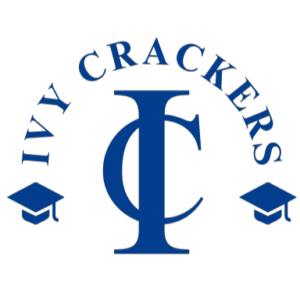Building a Stellar Resume
As we all know the placement season has kicked-in for all the major universities across the globe. While in India companies will be visiting the university campuses, in other countries students will be applying for jobs and then visiting company campuses if shortlisted.
In both the cases, one thing is common: a STELLAR resume!

Here are a few pointers to consider while preparing your resume
- Provide your contact information at the top and keep it concise: name, email address, mobile number, and a link to your LinkedIn profile
- You can start with a career summary/snapshot which gives a brief about you to interviewer: This should not exceed more than 3 bullet points
- First bullet point can cover your overall experience along with the different domains/industries you have worked in
- Second bullet point can cover your domain expertise such as digital marketing, sales, project management, product management etc.
- Third bullet point can cover your skills such as team management, team building, stakeholder management etc.
- Work Experience: General guideline is to document it in terms of recency. However, you can also document it based on relevance
- For example if you have a work experience of 4 years and you have worked at 3 organizations: you feel the work you did at the first & second organizations is most relevant, then you can start with the first organization and you can mention about the most recent organization in the last (provided your stint at the recent organization is a short one; it shouldn’t so happen that 3 years out of 4 years of work experience are at the recent organization)
- However if you have a work experience of say 7 years and you have worked at 3 organizations, but you worked at the first organization 5+ years back, then it makes more sense to start with the recent organization’s experience
- It’s ideal to have equal number of bullet points against each organization, however we would suggest to add more bullet points to the most relevant work experience
- For example if you have worked at 3 different organizations and you did incredible work at the most recent organization and it’s relevant to the job you are applying for, then talk more about that
- If the work you did at the first organization was incredible and most relevant, then you can talk more about it and start with that work experience (rather than going by recency)
- If you have worked in different domains such as sales, marketing, project management etc. over the years and you are applying for a sales role, then it makes more sense to talk in detail about your sales experience
- The STAR/SAR approach: Ideally, each point in your resume should follow a STAR approach i.e. Situation, Task, Action, Result OR Situation, Action, Result
- Briefly define the situation and then task at hand, followed by the action you took and the result it delivered (preferably quantifiable)
- For example the revenue in your business unit was stagnant (Situation), you had to prepare a revenue growth strategy (Task), you decided to tap into newer industry verticals or an unexplored geography (Action), and you were able to increase revenue by 10% through this strategy (quantifiable Result)
- A lot of professionals falter at describing “ACTION” in STAR/SAR approach. They use generic terms such as problem-solving, removing bottlenecks, performed root-cause analysis etc. without getting into the details of “how” the action was performed. It is important to crisply mention how the action was performed as it makes the interviewer believe that you were genuinely involved in taking the action
- While it’s good to have one liners in the resume, we would suggest to have 3-4 points in your resume that extend to 2-3 sentences in a bullet point. These should be the points you are most comfortable with and have in-depth knowledge of. These points differentiate from rest of the points in your resume and the interviewer may focus on these points subconsciously
- Marking key words in BOLD: You have to be careful while using this strategy. If you want to adopt this approach, then you should not have more than 4-5 words marked in BOLD in your resume. We have seen a lot of professionals having 2-3 words marked in BOLD in each bullet point; diluting the overall impact of words marked in BOLD
- The best thing is to have a one pager resume. However, if you have a lot of interesting stuff to talk about then it’s okay to extend it to two full pages (Do not keep it lingering at one and a half pages 😊)
- For a professional resume, the preferred font size is 11 and the preferred font text is Calibri
- If you do not have any work experience, then it is extremely important to talk about your internships, projects etc. in detail using the STAR approach. It should clearly articulate the impact you made and the learnings you had in your projects & internships
- Academics & extra-curriculars can be placed at the bottom of your resume. It’s suggested to not have more than 3 bullet points for extra-curriculars unless you have participated at a zonal, state, national level tournaments/competitions etc.

If you are a GMAT aspirant, visit our blog “Introduction to the new GMAT Exam Structure: GMAT Focus Edition“, or visit the official GMAT website to read about the latest changes in GMAT Exam structure and introduction of GMAT Focus Edition


